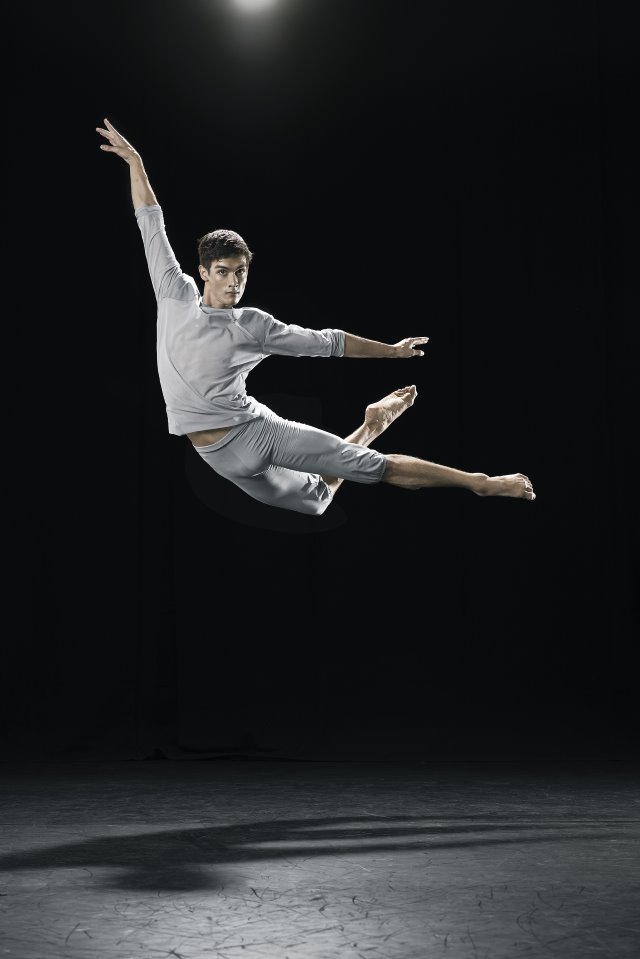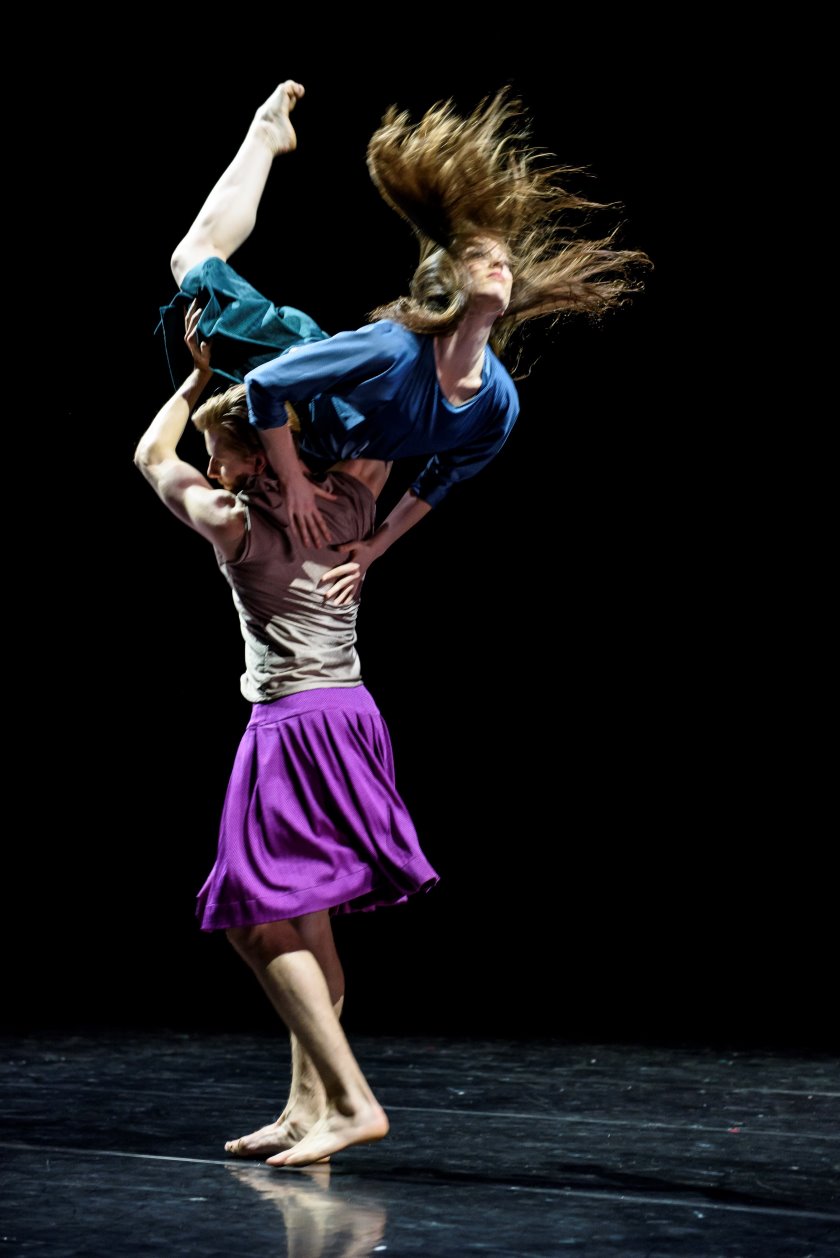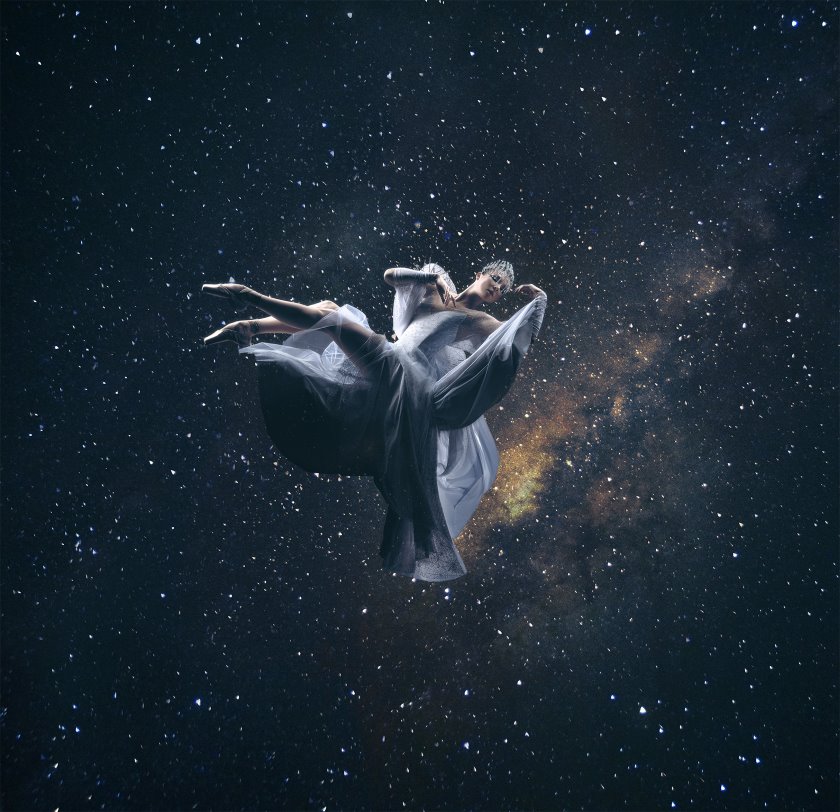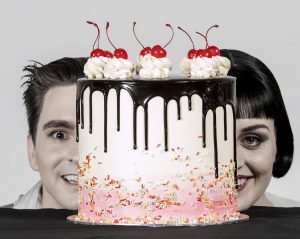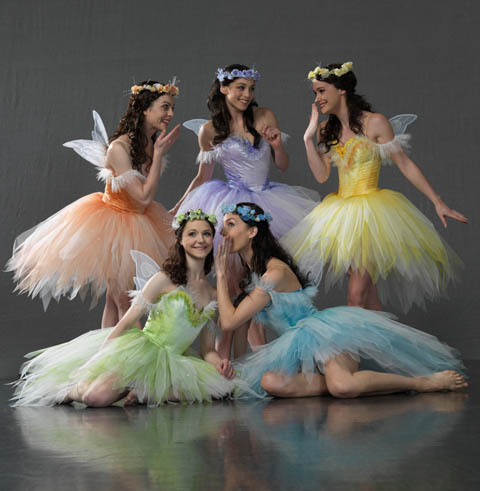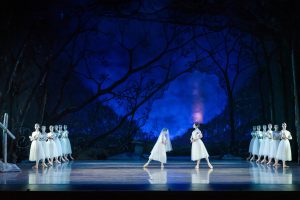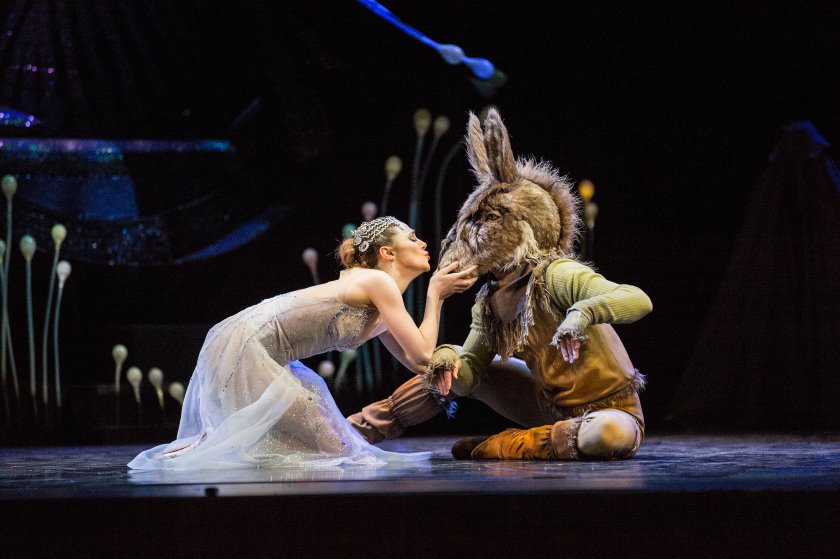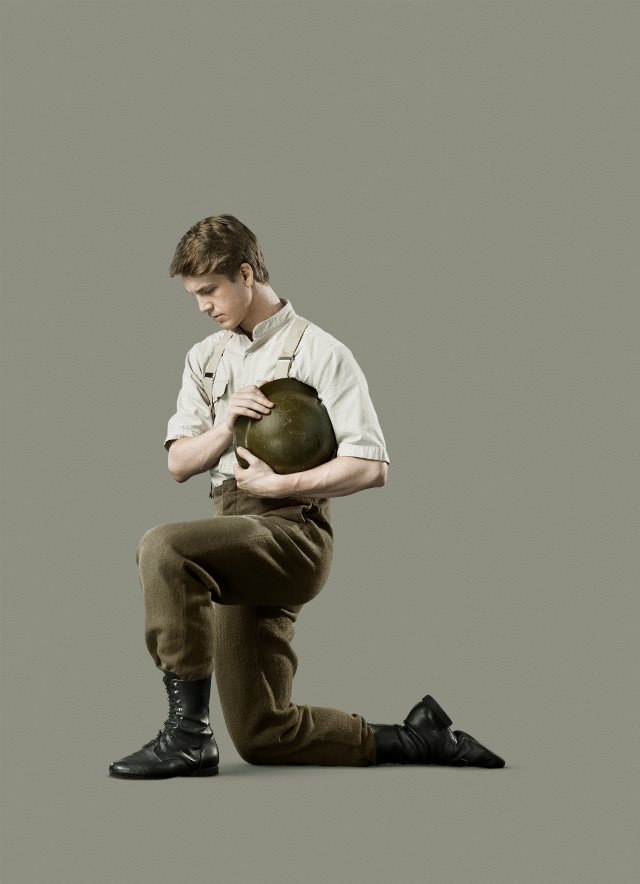
Ross Brown
Above Dancer Joseph Skelton in the core image used for Salute: Remembering WW1.
Three years in the planning, the Royal New Zealand Ballet’s Salute: Remembering WW1 commemorated the Great War in a memorable, respectful, and meaningful way, with a mixed programme that saw two world premières tonight.
Gareth Farr’s specially commissioned score for Andrew Simmons’ Dear Horizon opened proceedings, with what could be described as a cinematic theme with a strong melodic base as the action unfolded on stage. Tracy Grant Lord’s backdrop, of barbed wire barriers used in World War I, loomed over dancers lying on the stage, as a lone ballerino walked among them. Lighting came on gradually, Jason Morphett’s design using shadows and darkness to build tension. This sombre start gave way to a beautiful, haunting and contemporary choreography, with an underlying bleakness, as Simmons highlighted the loss suffered in war. Costumes were grey, further emphasizing the sense of despair and focusing us on the dancers’ movements. The solo cello by Rolf Gjelsten gave a sense of minimalism that contrasted other elements of the brassy, powerful Farr score. While composed for the ballet, and only complete with the action, it’s not hard to imagine the work released on its own for lovers of ballet and cinematic scores.
An all-male cast of twelve followed in Soldiers’ Mass. The genius behind Jiří Kylián’s choreography was how it conveyed emotion: a highly energetic and graceful ballet where the dancers move in a unified way, into battle constantly, pulling each other from the front and yet, still confronting, then falling to, the enemy. The score, by Bohuslav Martinů, set to the text by Jiří Mucha, was played back, and one scene sees the men lip-synching proudly to the Czech lyrics, yet with a sense of what they knew would follow. The ballet finishes as it started, with 12 backs to us, each dancer dropping his shirt in another representation of death as well as the annexation of the Sudentenland by Hitler in World War II. Shirtless ballerinos, incidentally, seemed to elicit greater applause from the audience as they took their bows. This restaging was by Roslyn Anderson, who had helmed the 1998 RNZB production of Soldiers’ Mass, with lighting design by Kees Tjebbes.
After the interval, Johan Kobborg’s Salute injected comedic moments into a classical ballet, set to the score by nineteenth-century composer Hans Christian Lumbye. It saw the return of live music after the recording in Soldiers’ Mass, performed by the New Zealand Army Band. These skilful musicians adapted themselves easily to the lighter atmosphere, with Sgts Riwai Hina and David Fiu, and Pvts Joseph Thomas and Tom Baker rearranging Lumbye’s music to the Band. Natalia Stewart’s costumes (jackets with epaulettes for the men, red peplums and plenty of tulle for the women) shone on stage in a very cheerful ballet involving different sets of dancers, highlighting different aspects of love, from shyness and confusion to overconfidence and partnership; as well as the inevitable farewells as men went off to war.
The battle vignette, with the General leading the charge, was equally enjoyable, interspersed with the long waits the women endured back home, before the conclusion as the soldiers returned home. Created for the University of North Carolina School of the Arts in 2010, Kobborg intended it to be a reflection of what happens when young people come together; the RNZB dancers showed their expressiveness in a ballet that injected a light-heartedness to the evening. Salute was staged by Florica Stanescu, with Morphett again behind the lighting design, with a brightness and cheer in contrast to his earlier work.
While the RNZB often picks the cheery production number to end on, it chose Neil Ieremia’s Passchendaele, a world première, which gave this reviewer initial fears that the infamous battle would leave audiences on a down note. The fear was unfounded, because of the scale of Ieremia’s ballet, involving 19 dancers, and the superb execution in dance of this tragic battle, notable for being the day on which more New Zealanders had died or had been wounded than on any other day. Dwayne Bloomfield, formerly of the New Zealand Army Band, composed the score, which the band performed: the moments of martial music signalled the flawed advance by the New Zealand Division under Gen Haig. The dancers moved with great pace at times, in groups, on- and off-stage, representing the power of the soldiers and artillery, through impossible conditions. At other moments they recalled memories of home, contrasting with the loss that families suffered. Geoff Tune’s backdrops, in red and black, signified the blood on the battlefields, and his first one hinted at skulls, shifting gradually to other scenes of burned trees and desolation. The end of Passchendaele was chilling, after the soldiers each fell, their loved ones releasing them, as knocks were heard around the St James, representing the messenger bringing home to 845 New Zealand families the worst news they could receive.
Ieremia was ingenious in how his choreography brought so much emotion and energy to the performance that the house was left in admiration. The message was indeed cautionary, telling us about the human tragedies of war, but the RNZB and the NZAB brought it to life with such conviction that Passchendaele received the greatest applause of the evening. It was a high note after all, but one that was more absorbing. Salute: Remembering WW1 is a superb programme, and a fresh way of appreciating the messages in the ongoing centenary commemorations of New Zealanders fighting ‘the war to end all wars.’—Jack Yan, Publisher

